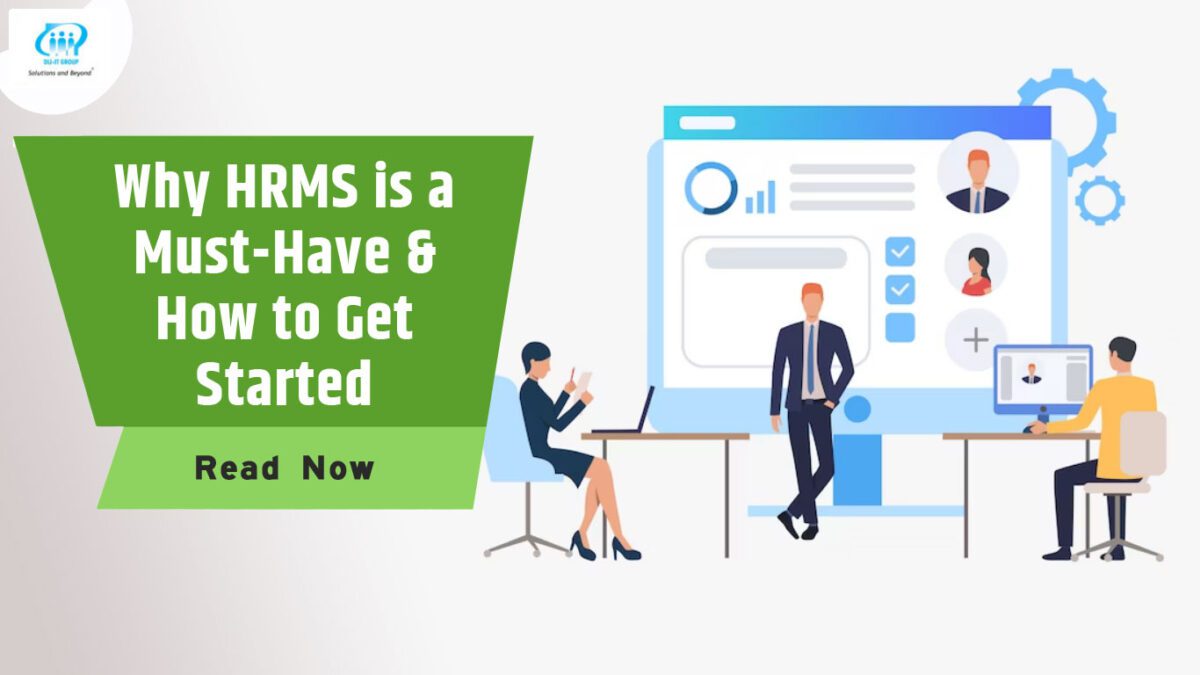The HRMS improves business productivity and efficiency. The system makes the HR functions efficient through data consolidation reducing repetitive tasks. The HRMS is an all-in-one centralised HR software system that allows a company to monitor various HR functions. Running a modern business means that the person must run every procedure, which needs to go right on the first try for less cost. Having HR software can make such demands easier to handle.
The main goal of HR software is to improve the productivity and efficiency of the business. The software makes the processes easier by consolidating data and automating all the manual and repetitive tasks.
How to Get Started on the HRMS
So, as you know the importance of the HRMS, here is an overview of how you can integrate the software into your organisation’s work.
- Involve key stakeholders from the start.
- Work closely with the IT department to export data
- Conduct tests to ensure all modules run efficiently
- Start the user training
Hiring an HRM specialist or consultant is a good idea if the HRMS integration tends to be complex. You must do this if your company does not have adequate expertise in this area. The expert can help with a quick cost-benefit analysis that will be a smart move for the company.
-
Work with the IT Department to Migrate the Data
Migration of data is a complicated, sensitive, and expert procedure.
Only seasoned workers can do it. When you work closely with an IT department, you delegate some duties and closely monitor the progress. The HRMS software allows you to do so and is a critical component of the integration process.
You can also ask the users to check their information and see if it is correct. It maintains data integration and provides an opportunity for the employees so that they engage in self-service.
-
Start User Training
Now the system is in place, and it should work typically. It is time to train the users to acclimate themselves with the software. You can hold several team meetings to show the demo usage of the software.
You can even hold Q&A sessions to clear the doubts of the employees. It will increase accountability and enable HR managers to do their jobs more effectively.
-
Monitors KPIs (Key Performance Indicators)
KPI, or Key Performance Indicator, is a measurable value that indicates how effectively employees can accomplish their goals. Companies should measure the things that are of significance. The HRMS can automate all of the core HR functions. Some of the factors and essential KPIs that HR managers can monitor are:
Position Duration: There is a decrease in the employee’s productivity if they are in one position for too long. The job of the HRMS is to scrutinise how long every worker stays in their place. It helps the HR leaders assess when to promote the employees.
Employee Retention: The retention rate helps HR to measure employee retention. It implies employee stability in the business. The company has to bear the cost when an employee leaves and needs to hire new candidates.
Absenteeism: The KPI signifies the number of days the worker was absent due to sick leaves or other grounds. The HRMS tracks attendance and time without any errors.
-
Efficiently Handle Employees
One of the ways to enhance overall efficiency in the business is by decreasing redundant administrative jobs and automating core functions. Most HRMS makes gathering all the business data and automating all the enterprise workflows effortless. It also adds visibility by using graphs and charts.
Some of the essential characteristics that the HR and payroll software Dubai can offer to enhance employee administration are:
Attendance and Time Management: As stated before, this software tracks the workers’ job hours. It ensures that the employees have fair compensation for the overtime they do. Without the HRMS, the data is challenging to assess as the personnel might skip some details.
Training Management: With the help of the HRMS, the HR managers can assess and track the instructor-led training courses for the employees. It systematises training curriculum, grading, programs, and history for employee record management.
Payroll: The HRMS can handle the payroll of the business. It will automate the paychecks and ensure precision when paying the correct amount on time.
Performance Management: Generally, the company monitors employee performance for a long time. They also provide feedback once a year. It is a time-consuming process, and keeping track of the data of all the employees is quite a challenge.
The additional features of the HRMS software can allow the HR personnel to keep track of all the data of all employees. Not only that, but they can also provide feedback in real-time.
End Note
With the HR and payroll software Dubai is the current automation protocol in the HR domain. It is cost-effective and effortless; thus, organisations use it to enhance their productivity and efficiency in the corporate world. To know more you can contact us at info@dli-it.com
